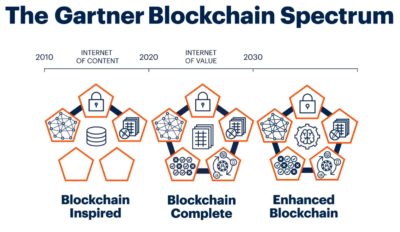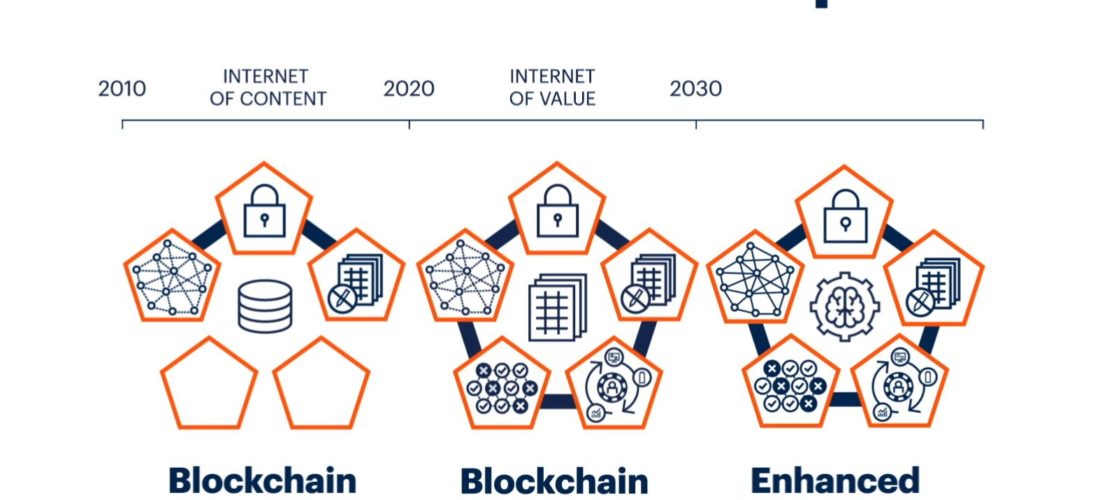Blockchain is forecast to generate $3.1 trillion in new business value worldwide by 2030, half of it by 2025 with applications designed for operational improvement, according to Gartner, Inc. However, enterprises can make missteps that will leave them out of position to capitalize fully on blockchain, under competitive threat by using the wrong strategy and being lulled into a false sense of progress and capability.

© Gartner
Gartner created the Blockchain Spectrum to examine the phased evolution of blockchain solutions and how this path aligns to the anticipated value businesses can derive. In the book “The Real Business of Blockchain: How Leaders Can Create Value in a New Digital Age,” launched this month, Mr. Furlonger and co-author Christophe Uzureau, research vice president at Gartner, use the spectrum as one of several analytics models to reveal how blockchain will evolve from what it is today to what it will be by 2030.
The Blockchain Spectrum is made up of four evolutionary phases that segment solution offerings and characteristics, some of which won’t fully develop for years, but will have critical implications for the future of business and society.
- Blockchain-enabling technologies
These technologies provide the foundation upon which existing future blockchain solutions can be created and business modeled. This foundation can also be used as part of non-blockchain solutions; for example, to improve the operational efficiency. The foundational technology includes cryptography, distributed computing, peer-to-peer networking and messaging. - Blockchain-inspired
In 2012, business leaders, primarily in financial services, started exploring blockchain through proofs of concepts and pilots. This phase will last through the early 2020s. Blockchain-inspired solutions leverage the foundational technologies but use only three of the five elements of blockchain — distribution, encryption and immutability. While some of these solutions make use of tokenization, they are not sufficiently decentralized to use such tokens to create new value exchange systems as part of the internet of value. As a result, these solutions often aim to reengineer existing processes specific to an individual organization or industry while maintaining centralized controls. - Blockchain-complete
Blockchain-complete solutions deliver the full value proposition of blockchain using all five elements — distribution, encryption, immutability, tokenization and decentralization. Blockchain-complete solutions will feature tokenization enabled by smart contracts and decentralization, two components blockchain-inspired solutions lack. These solutions enable trade in new forms of value (such as new asset types) and unlock monopolies on existing forms of value ad processes (such as digital commerce or digital advertising).
“Few mainstream organizations are building blockchain-complete solutions yet. However, many startups providing blockchain-native solutions are doing so, and some will gain market momentum by the early 2020s, with more scale apparent after 2025,” said Mr. Uzureau. “Though not immediate, the proliferation of blockchain-complete solutions will push organizations to explore new ways of operating with greater degrees of decentralization than they have now.” - Enhanced Blockchain
After 2025, complementary technologies such as the Internet of Things (IoT), artificial intelligence (AI) and decentralized self-sovereign identity (SSI) solutions will converge and become more integrated with blockchain networks. The resulting enhanced blockchain solutions will expand the types of customer and the value that can be tokenized and exchanged and will enable a large number of smaller transactions to occur that would not be possible with traditional mechanisms.
Source: Gartner




















